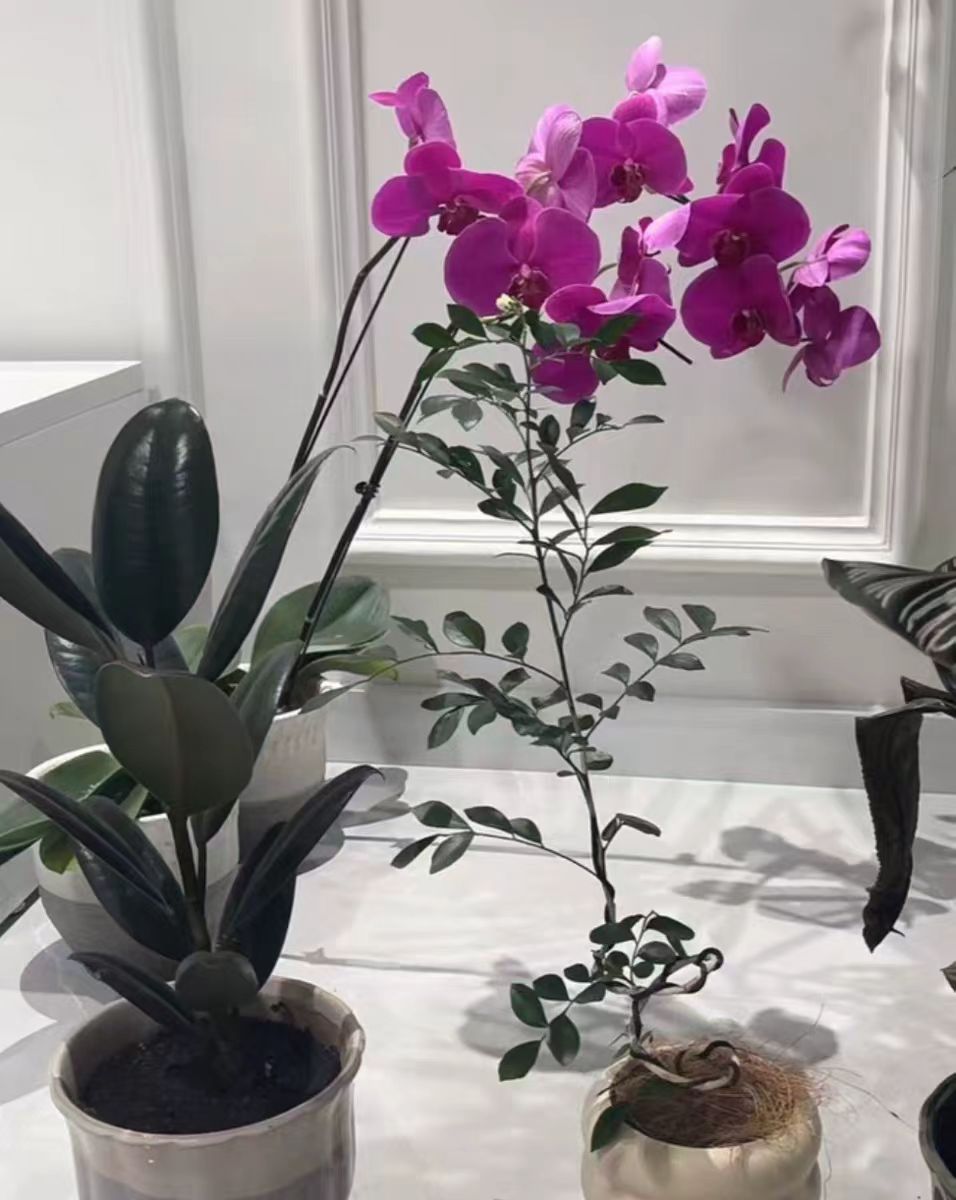When the plant is growing vigorously and more off - shoots are sprouted, division propagation becomes a common way for flower enthusiasts to expand their “orchid garden”. However, when it comes to dividing Phalaenopsis during the high - temperature summer, many people have questions in their minds: Can Phalaenopsis be divided during the high - temperature summer? Can it survive after division?
From the perspective of the growth habits of Phalaenopsis, it is native to tropical and subtropical regions, and prefers a warm, humid and well - ventilated environment. The most suitable growth temperature is between 15℃ and 30℃. During the high - temperature summer, the ambient temperature often exceeds 30℃, and even reaches above 35℃. In such a high - temperature environment, the growth rate of Phalaenopsis will be significantly slowed down, and it may even enter a semi - dormant state. At this time, the plant's metabolism is weakened, and its self - repair ability is much worse than that in the vigorous growth period. Division is a kind of trauma to Phalaenopsis, which requires a large amount of nutrients and energy to repair the wounds and grow new roots. In a high - temperature environment, the growth of the plant itself is restricted, and it is difficult for the plant to recover quickly after division, so the survival difficulty is relatively high.
In addition, high temperature in summer is often accompanied by high humidity, and this hot and humid environment is especially prone to the growth of bacteria and fungi. During the division process, the roots and stems of Phalaenopsis will have wounds, and these wounds are like open doors, allowing pathogens to take advantage. Once the wounds are infected, it will lead to poor growth of the divided seedlings at best, and at worst, it will cause the whole Phalaenopsis plant to rot and die. In contrast, dividing in spring and autumn, when the temperature is more suitable and the climate is relatively dry, the probability of wound infection will be greatly reduced, which is more conducive to the survival of Phalaenopsis after division.
However, it is not absolutely impossible to divide Phalaenopsis during the high - temperature summer. If suitable environmental conditions can be created, there is still a possibility of survival for Phalaenopsis divided in high - temperature summer. For example, place the divided Phalaenopsis in an air - conditioned room, control the temperature at about 25℃, and at the same time, ensure good ventilation, reduce the air humidity, and reduce the opportunity for pathogens to breed. Moreover, disinfection work should be done well during division. Use a sharp and disinfected knife to avoid wound tearing. After division, apply fungicides such as carbendazim to the wounds, and the planting substrate should also be disinfected. After planting, do not water in a hurry. Wait until the wounds are slightly dry, and then water appropriately, following the principle of “watering when the soil is dry and stopping when it is wet”.
However, even with these measures, the risk of division during the high - temperature summer is still much higher than that in spring and autumn. The temperature in spring and autumn is suitable, and Phalaenopsis is in the vigorous growth period. After division, it can quickly adapt to the new environment, grow new roots and resume growth. Therefore, unless there are special circumstances, from the perspective of improving the survival rate of division, it is not recommended to divide Phalaenopsis during the high - temperature summer.
To sum up, it is difficult and risky for Phalaenopsis to survive if it is divided during the high - temperature summer. In order to ensure the smooth survival and healthy growth of Phalaenopsis after division, it is recommended that flower enthusiasts choose spring and autumn as the division time, so that they can harvest more delicate Phalaenopsis.
Can Phalaenopsis be divided during the high - temperature summer?

Share with
Tagged in :




Leave a Reply